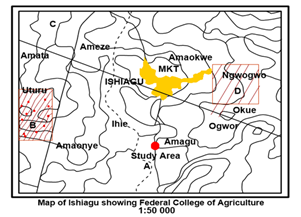Levels of Zinc (Zn), Copper (Cu), Iron (Fe), and Cadmium (Cd) in Soil, Rice Stalk, and Oryza Sativa Grain in Ishiagu Rice Field, Ebonyi State, Nigeria; Human Health Risk
Keywords:
Heavy metals, Rice, Soil, Health risk, Environmental pollutionAbstract
Levels of heavy metals (Zn, Cu, Fe, Cd) were determined in soil, rice grain, and rice stalk from Federal College of Agriculture Ishiagu rice field, Ebonyi state, Nigeria. The dried samples were digested with a 1: 3 (HNO3: HCl) mixture and analyzed with atomic absorption spectrophotometer (AAS). The mean concentration of the metals in the soil before planting, soil after harvest, and rice grain were as follows: Zn (7.28, 11.33 and 24.90); Cu (3.40,4.64 and 4.14); Fe (803.04, 735.47 and 107.78); Cd (1.14, ND and ND) and were all within FEPA and FAO/WHO limits. The daily intake values for a 60 kg adult were Zn (0.04), Cu (0.01), and Fe (0.18) and were all below the recommended limits by Codex Alimentarius standards. The Target Hazard Quotient (THQ) for Zn, Cu, and Fe was less than one (1<), and the total hazard index was less than 1, indicating that the population will not be exposed to the potential health risk from these metals. However, the metal levels should be monitored to ensure they stay at harmless levels.

Published
How to Cite
Issue
Section
Copyright (c) 2022 D. N. Ajah, E. Agboeze, J. N. Ihedioha, E. Chukwudi-Madu, C. C. Chime

This work is licensed under a Creative Commons Attribution 4.0 International License.







